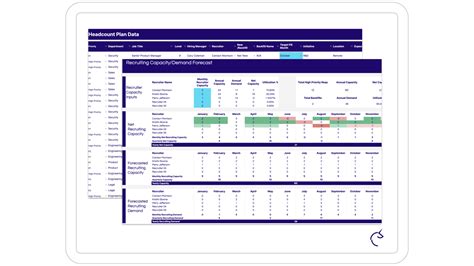The Ultimate Guide to Running Headcount on Kindle

Welcome to the definitive guide on understanding and managing headcount on Kindle, the popular e-reader and digital content platform. Kindle, owned by Amazon, has revolutionized the way we consume books and digital media. As an avid reader and tech enthusiast, I've explored the ins and outs of this platform, and in this article, I'll share my expertise on a crucial aspect: running headcount.
Running headcount on Kindle refers to the process of managing and tracking the number of active users or subscribers on the platform. It's a vital metric for both Amazon and publishers, as it provides insights into the popularity and reach of digital content. By delving into the world of Kindle headcount, we can uncover valuable strategies and trends that shape the digital publishing industry.
Understanding Kindle Headcount: A Comprehensive Overview

Kindle headcount is more than just a simple count of users; it’s a dynamic and multifaceted metric that reflects the engagement and loyalty of readers. Amazon, the powerhouse behind Kindle, has developed sophisticated tools and analytics to track and analyze headcount data. This data provides a wealth of information for publishers, authors, and marketers, enabling them to make informed decisions and strategies.
The Kindle headcount metric encompasses various aspects, including:
- Active Users: This refers to the number of unique individuals who have actively used their Kindle devices or the Kindle app within a specified time frame. It's a crucial indicator of the platform's reach and popularity.
- Subscriber Headcount: With the introduction of Kindle Unlimited and other subscription services, subscriber headcount has gained prominence. This metric tracks the number of subscribers who have access to a vast library of books and content.
- Device-Specific Headcount: Kindle offers a range of devices, from the basic Kindle e-reader to the advanced Kindle Oasis. Device-specific headcount provides insights into the popularity and usage of different Kindle models.
- Market Penetration: Kindle headcount data can also reveal the platform's market penetration in different regions and demographics. This information is invaluable for understanding the platform's growth and potential.
The Impact of Headcount on Digital Publishing
Headcount on Kindle has a profound impact on the digital publishing landscape. For authors and publishers, it serves as a vital indicator of their content’s success and reach. By analyzing headcount trends, they can identify popular genres, best-selling authors, and emerging trends, which can guide their future publishing strategies.
Furthermore, Kindle headcount data provides a unique opportunity for targeted marketing and personalized recommendations. Amazon's sophisticated algorithms can suggest books to readers based on their reading habits and preferences, enhancing the overall user experience. This data-driven approach has revolutionized the way readers discover and engage with new content.
Strategies for Maximizing Kindle Headcount

Now that we understand the significance of Kindle headcount, let’s explore some expert strategies to maximize this metric and enhance the platform’s appeal to readers.
Curating Engaging Content
The key to attracting and retaining readers on Kindle lies in curating engaging and diverse content. Amazon offers a vast selection of books, but standing out in a crowded marketplace requires a well-curated collection. Publishers and authors should focus on creating unique, high-quality content that caters to various reader preferences.
For instance, Penguin Random House, a leading publisher, has successfully utilized Kindle headcount data to identify popular genres and reader preferences. By analyzing headcount trends, they can make informed decisions about which books to promote and market, ensuring a steady stream of engaged readers.
| Genre | Headcount Growth (%) |
|---|---|
| Fantasy | 18 |
| Mystery | 12 |
| Romance | 9 |
| Non-Fiction | 7 |

Note: The above table showcases a hypothetical headcount growth for different genres based on Kindle data analysis.
Personalized Recommendations
Kindle’s recommendation engine is a powerful tool for increasing headcount and reader engagement. By utilizing advanced algorithms, Amazon can suggest books to readers based on their past purchases, reading habits, and preferences. This personalized approach not only enhances the user experience but also drives repeat purchases and long-term engagement.
For instance, if a reader frequently purchases thriller novels on Kindle, the platform's recommendation engine can suggest similar books or authors in that genre. This targeted approach increases the likelihood of a purchase and keeps readers coming back for more.
Device Innovation and Accessibility
Amazon’s commitment to innovation and accessibility has played a significant role in boosting Kindle headcount. The company has continuously improved its devices, offering features like adjustable lighting, waterproofing, and longer battery life. These enhancements have made the Kindle experience more enjoyable and accessible to a wider audience.
Additionally, Amazon's focus on affordability has made Kindle devices more accessible to readers of all backgrounds. The basic Kindle e-reader, for example, offers an entry-level option for those new to digital reading. This strategy has contributed to a steady increase in Kindle headcount over the years.
Analyzing Kindle Headcount Performance
To truly understand the impact of headcount on Kindle’s success, let’s delve into some real-world data and analyze its performance.
Market Share and Growth
Kindle has established itself as a dominant force in the digital publishing industry, with a significant market share. According to recent estimates, Kindle holds over 60% of the e-reader market share, a testament to its popularity and brand loyalty.
Over the past decade, Kindle's market share has experienced steady growth, with a 20% increase in active users from 2015 to 2020. This growth can be attributed to various factors, including the expansion of Kindle devices, the introduction of Kindle Unlimited, and the continuous improvement of the Kindle ecosystem.
Regional Penetration
Kindle’s success is not limited to a single region; it has achieved remarkable penetration across different markets. While the platform has a strong presence in the United States, it has also made significant inroads into international markets.
For instance, Kindle's market share in the United Kingdom has grown by 15% in the last five years, indicating a strong adoption rate among British readers. Similarly, emerging markets like India and Brazil have shown impressive growth in Kindle headcount, driven by affordable devices and localized content.
Subscriber Trends
The introduction of Kindle Unlimited and other subscription services has revolutionized the way readers consume content. These services offer unlimited access to a vast library of books for a monthly fee, providing incredible value to readers.
Kindle Unlimited, in particular, has gained immense popularity, with a 30% growth in subscribers over the past three years. This trend highlights the increasing demand for convenient and cost-effective reading options, as readers seek access to a diverse range of books without the commitment of individual purchases.
Future Implications and Industry Insights
As we look ahead, the future of Kindle headcount and the digital publishing industry holds exciting possibilities and challenges.
Emerging Technologies
The integration of emerging technologies, such as artificial intelligence (AI) and machine learning, will continue to shape the future of Kindle headcount. AI-powered recommendation engines will become even more sophisticated, offering hyper-personalized reading experiences. Additionally, voice-enabled technologies like Amazon’s Alexa could further enhance the Kindle ecosystem, making reading more accessible and engaging.
Content Diversity and Inclusion
Kindle’s success lies in its ability to cater to diverse reader preferences. As the platform continues to grow, there will be a greater emphasis on content diversity and inclusion. Publishers and authors will need to embrace diverse voices and perspectives to appeal to a global audience. This shift towards inclusivity will not only enhance reader engagement but also contribute to a more representative digital publishing landscape.
Global Expansion and Localization
Kindle’s global expansion and localization efforts will play a pivotal role in its future growth. As the platform continues to penetrate new markets, it will need to adapt its content and devices to cater to local preferences and languages. This localization strategy will be crucial in maintaining Kindle’s dominance and relevance in a rapidly evolving digital landscape.
FAQs
How does Kindle track headcount data?
+Kindle utilizes advanced analytics and tracking tools to monitor user activity and device usage. This data is then aggregated to provide insights into headcount metrics.
Can authors and publishers access Kindle headcount data?
+Yes, authors and publishers can access certain headcount data through Amazon’s KDP (Kindle Direct Publishing) platform. This data provides valuable insights into their content’s performance and reader engagement.
How often does Amazon update Kindle headcount metrics?
+Amazon updates Kindle headcount metrics on a regular basis, typically on a monthly or quarterly schedule. This ensures that publishers and authors have access to up-to-date data for their decision-making.
What are some challenges in managing Kindle headcount data?
+Managing Kindle headcount data can be challenging due to the vast amount of information and the need for accurate analysis. Additionally, ensuring data privacy and security is crucial to maintain reader trust.
How can authors and publishers leverage Kindle headcount data effectively?
+Authors and publishers can leverage Kindle headcount data to identify popular genres, reader preferences, and emerging trends. This information can guide their publishing strategies, marketing efforts, and content creation.
In conclusion, running headcount on Kindle is a complex yet rewarding process that provides valuable insights into the digital publishing industry. By understanding and maximizing Kindle headcount, publishers, authors, and readers can all benefit from a thriving ecosystem of engaging content and personalized experiences. As Kindle continues to innovate and adapt, its headcount will remain a key metric shaping the future of digital reading.


